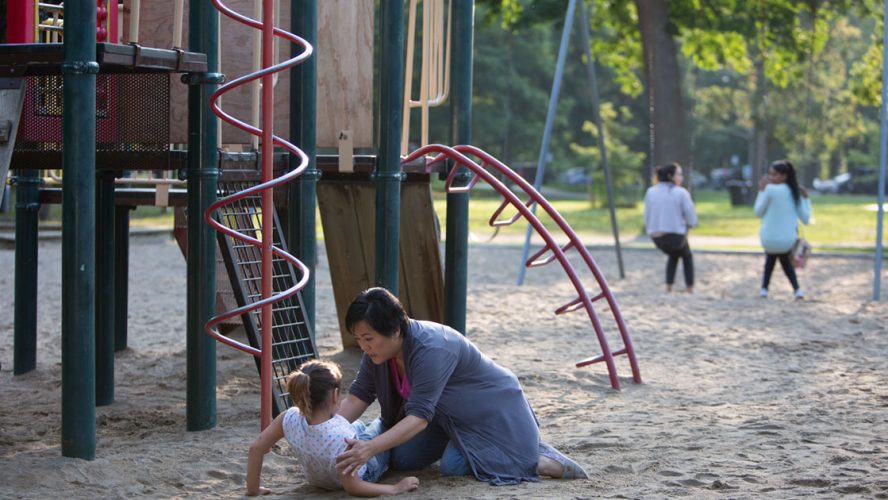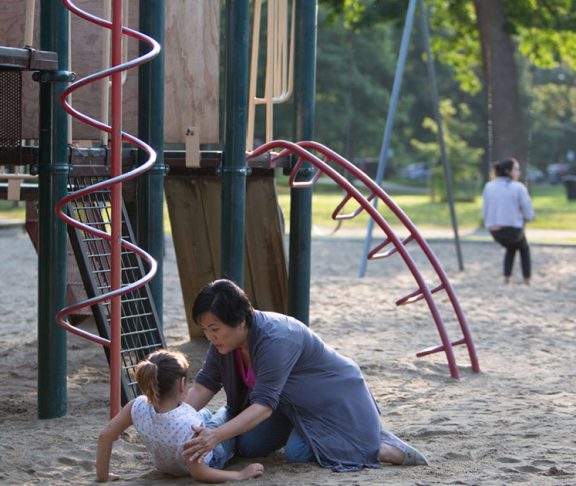
Stephanie Cowle
Director, Knowledge Translation, Parachute
As a parent, this scene is probably familiar: your child moving around the room and — smack! — going headfirst into a piece of furniture. Or your kid scrambling up the monkey bars to show off their latest trick, only to slip and fall to the ground. No bleeding or broken bones is a welcome relief. But what about injuries that you can’t see on the surface? When should you be concerned about a concussion?
A concussion is a type of brain injury. It changes the way the brain functions, so can affect your child physically, cognitively or emotionally, even their sleep. Concussions are unique because, unlike other brain injuries, they can’t be seen on routine X-rays, CT scans or MRIs.
A concussion can be caused by any hit to your child’s head (including their face or neck) or a blow to their body that causes their head to move suddenly back and forth. Examples include your child being hit in the head with a ball, colliding with another kid, or falling and knocking their head on the floor. While most concussions actually aren’t sport-related, if your child is between the ages of 10 and 14, they are most likely to suffer a concussion during sports participation or recreational play. For younger children, the injury is more likely to happen because of a fall.
It’s important to know that not every impact will lead to a concussion. But being aware of the signs to watch for after an impact is important, as is knowing what to do if those signs show up. The most common symptom of concussion is a headache. Others include dizziness, nausea, sensitivity to light and difficulty remembering. It’s common for children to express that they just don’t feel right. If your child is very young or communicates nonverbally, watch for changes in their behaviour and feeding, sleeping or playing habits.
If your child loses consciousness, has neck pain, vomits multiple times, has a seizure or feels tingling in their arms or legs, treat these “red flag” signs as a medical emergency and get help immediately. To have this information on hand wherever you go, download the free Concussion Ed app (available for iOs and Android).
If your child has any signs or symptoms of concussion, remove them from the activity right away. Take them to see their doctor or nurse practitioner as soon as possible for a medical assessment. Research shows that quick recognition and proper management help with concussion recovery. If your child has a concussion, they will follow a gradual step-by-step approach to return to activities, such as school, sport and playing with friends. The time this takes depends on your child’s symptoms and progress, but most children are expected to recover within a month and without any specialized treatment.
In addition to learning about how to recognize and respond to a possible concussion in your child, there are simple things you can do as a parent to help prevent this type of injury from happening. Prevent falls in and around your home, for example by using stair gates if you have young children. Teach your child why it’s important to follow the rules of any game they are playing and respect others.


